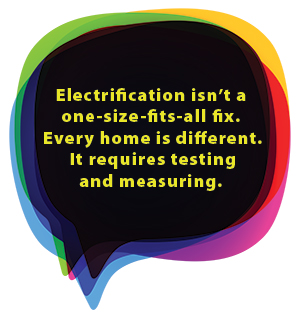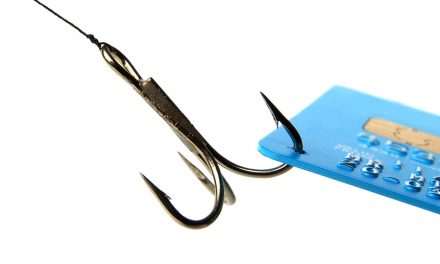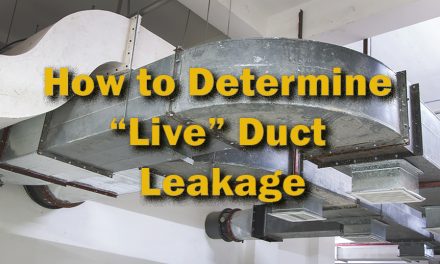But the truth is, like any HVAC system, a heat pump’s performance depends entirely on the home, the equipment installation quality, and whether you size it properly for the job. Without those pieces in place, even the best equipment won’t deliver the promised results.
Don’t Over Promise: Test and Measure
But I’d be lying if I said I wasn’t cautious when I talk to customers about electrification. Not because I don’t believe in the technology — I do — but because it isn’t a one-size-fits-all fix. Every home is different. The construction, insulation levels, window quality, duct design, and even the customer’s utility rates play a role in whether a heat pump makes sense.

That’s why I always start by testing the existing system, inspecting the ductwork, and performing a proper load calculation. I need to understand how the house loses and gains heat before I can recommend the right equipment. It’s about giving the customer what actually works for them, not just what’s being pushed by rebates or mandates.
Don’t Forget About Dual-Fuel Solutions
One of the best solutions I’ve found for customers in colder areas — or those dealing with high electric rates — is a dual fuel system. This combines the efficiency of a heat pump with the reliability of a gas furnace.
The heat pump handles most of the heating during mild and moderately cold days, keeping energy costs down and reducing emissions.
Then, on those rare nights when the temperatures really plummet and the heat pump struggles to keep up, the gas furnace takes over. It’s truly the best of both worlds, offering efficiency where it makes sense and dependable heating when you need it most.
Of course, the success of a heat pump or dual fuel system depends heavily on how it’s set up, especially at the thermostat. It’s critical to program the system’s balance points, lockout temperatures, and staging priorities correctly so the heat pump runs as much as possible within its efficient operating range.
The thermostat should also control when the furnace or heat strips activate, preventing unnecessary energy use. I always explain these settings to customers, so they understand how the system works, and make sure the programming aligns with their comfort preferences and utility rates.
What About Those Rebates?
Another important conversation I often have is about rebates and incentives. Many current programs heavily favor full electrification and heat pump installs, while leaving gas furnace upgrades out of the picture. In some cases, a customer may need to choose between maximizing rebates and installing the system that will perform best and make the most financial sense over the life of the equipment.
Click Below for the Next Page:













Recent Comments